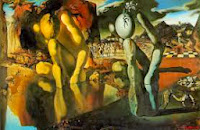Learning Classics is a bit like putting on a magic pair of 3-D glasses. Once you start delving into the language and the culture, you'll start to see it all around you. This blog is a record of the club's journey through the worlds and language of ancient Rome and Greece... and through modern times, too, searching for the influence of classics all around us. You'll also be able to find vocab, home tasks, links and generally enlightening info here, too.





